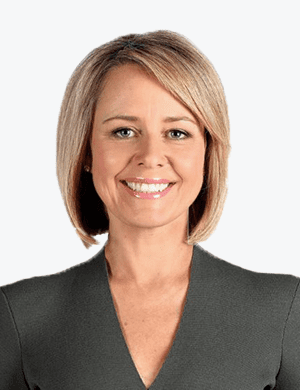This tax summary card was produced as an information service and without assuming duty of care. This information is based on our interpretation of relevant superannuation and taxation laws as at 1 July 2025
William Buck is an association of independent firms, each trading under the name of William Buck across Australia and New Zealand with affiliated offices worldwide
Companies and Superannuation Funds
| Taxpayer | 2026 Tax Return (30 June Year End) | |
| Lodgment date | Payment date | |
| All taxpayers | ||
| All entities with one or more outstanding tax returns as at 30 June 2025.(1) | 31 October 2025 | 1 December 2025 |
| Taxable large/medium taxpayers (2)(3) | 15 January 2026 | 1 December 2026 |
| Non-taxable and new registrant large/medium taxpayers(2)(3), new registrant head companies of consolidated groups, and new registrant self-managed superannuation funds. |
28 February 2026 | 28 February 2026 |
| Companies(3) and superannuation funds with total income in excess of $2M (per latest return lodged) but not medium/large. |
31 March 2026 | 31 March 2026 |
| Remaining companies(3) and superannuation funds. | 15 May 2026 | 15 May 2026 |
(1) If all outstanding tax returns are lodged prior to 31 October 2025, the lodgment due date should revert back to normal.
(2) Large taxpayers include:
- Companies that have annual total income of more than $10M, members of a large business group, and public companies; and
- Superannuation funds with prior year income more than $10M, prior year investments more than $50M or non-complying superannuation funds.
(3) Includes head companies of consolidated groups.
Corporate Tax Rates – 2025/26
| Year | Base rate entity(2) | Other companies |
| 2025/26 (1) | 25% | 30% |
(1) Effective 1 July 2018 the base rate entity turnover threshold increased to $50M and has not been adjusted since.
(2) The definition of “base rate entity” limits the ability to access the lower corporate tax rate to companies with no more than 80% passive income (as defined).
Franking Rates – 2025/26
| Income year dividend paid | Prior year turnover | Rate for franking purposes |
| 2026 | <$50m | 25% (1) |
| $50m or more | 30% |
(1) The company must also meet the definition of a base rate entity, including assessable income comprising of no more than 80% passive income.
Motor Vehicle Depreciation Cost Limit
| Year |
Depreciation Limit |
| 2024/2025 | $69,674 |
| 2025/2026 | $69,674 |
Interest Rates
| Year | Division 7A benchmark interest rate | Unpaid present entitlement and sub-trust prescribed interest rate (1) |
|
| 7-year loan | 10-year loan | ||
| 2024/25 | 8.77% | 8.77% | 10.79% |
| 2025/26 | 8.37% | 8.37% | 10.38% |
(1) Note these rates only apply to sub-trusts arising prior to 1 July 2022.
Small Business Taxpayers – Depreciation Limits for Business Assets
| Turnover Eligibility | Restrictions | Deduction |
| From 01 July 2025 – 30 June 2026 (Instant Asset Write-off) | ||
| Less than $10 million aggregated turnover | Cost $20,000 or less | Immediate |
| Small Business Simplified Deprecation Pool(1) | ||
| Less than $10 million aggregated turnover | Cost greater than $20,000 | First Year 15%
Subsequent Years 30% |
(1) Note the provisions that prevent small business from re-entering the simplified depreciation regime for five years if they opt-out will continue to be suspended until 30 June 2024
Fringe Benefits Tax (FBT)
| FBT Rates – Year ending 31 Mar 2026 | ||
| FBT rate |
47% |
|
| FBT benchmark interest rate | 8.62% | |
|
FBT gross-up rates |
Type 1 benefits | 2.0802 |
| Type 2 benefits | 1.8868 | |
| Car park benefit threshold (per day) | $11.03 | |
| Motor vehicle statutory formula percentage(1) | 20% | |
| Motor vehicle (other than a car) – cents per km rate | 69 cents | |
(1) Contracts entered into before 7:30pm (AEST) on 10 May 2011 may be subject to a different rate.
Superannuation Balance Caps – 2025/26
| Balance limit | ||
| 2024/25 | 2025/26 | |
| Transfer Balance Cap (TBC)(1) | $1.9 million | $2.0 million |
| Total Superannuation Balance (TSB) Cap(2) | $1.9 million | $2.0 million |
(1) TBC limits the total amount an individual can transfer into the Retirement Phase of superannuation.
(2) TSB is relevant for determining eligibility to make certain superannuation contributions. An individual’s TSB that equals or exceeds the cap at 30 Jun of the prior financial year cannot make non-concessional contributions.
Superannuation Contributions - 2025/26
| Contribution | Age at 30 June | Cap | Contributions tax |
| Concessional | All ages | $30,000 |
15% tax on contributions within cap. Tax on excess |
| Non–concessional | Under 75 | $120,000 (or $360,000 over 3 years) |
Tax on excess – option 1 Tax on excess – option 2 |
| 75 or over | $120,000 |
You may be eligible to make non-concessional contributions of up to three times the annual non-concessional contributions cap in a single year. If eligible, when making contributions greater than the annual cap, you gain access to future year caps, referred to as “bring forward” option.
The ability to make non-concessional contributions may be limited by the member’s account balance and its proximity to the superannuation balance cap.
Carry-forward concessional contributions – 2025/26
| Total Super Balance Threshold(1) | Carry-forward concessional contributions | |
| Relevant Concessional Contribution Cap Year |
Unused Concessional Contribution Cap expiry year |
|
| $500,000 | 2021 |
2026 |
| 2022 |
2027 |
|
| 2023 |
2028 |
|
| 2024 |
2029 |
|
| 2025 |
2030 |
|
| 2026 |
2031 |
|
The Total Superannuation Balance (TSB) must be less than $500,000 at 30 June of the previous financial year
Age Restrictions on Superannuation Contributions – 2025/26
| Age |
Acceptance of contributions |
| Under 55 | All contributions can be accepted, except Downsizer Contributions |
| 55 to 74 | All contributions can be accepted(1) |
| 75 and over(2) | Mandated employer contributions and Downsizer Contributions |
(1) From 1 July 2023, Downsizer Contributions can be accepted for members 55 and above
(2) May still have the ability to make additional contributions up to 28 days after the end of the month in which the member turns 75
Preservation age
| Date of birth | Preservation age |
| Before 1 July 1960 | 55 |
| 1 July 1960 to 30 June 1961 | 56 |
| 1 July 1961 to 30 June 1962 | 57 |
| 1 July 1962 to 30 June 1963 | 58 |
| 1 July 1963 to 30 June 1964 | 59 |
| From 1 July 1964 | 60 |
Taxation of Superannuation Benefits
Superannuation income streams – element taxed in fund
| Age at 1 July | Tax implications |
| Under preservation age | Assessable at marginal rates. 15% tax offset on disability super benefit only. |
| At or above preservation age (but under 60) |
Assessable at marginal rates. 15% tax offset. |
| 60 and over | Non-assessable, non-exempt income |
Superannuation lump sums
| Age at lump sum date | Tax rate(1) | |
| Taxable – taxed(2) | Taxable – untaxed | |
| Under preservation age | 20% | Within plan cap(3)– 30% Excess above plan cap – 45% |
| At or above preservation age (but under 60) | Within cap – Nil
Excess above cap – 15% |
Within low-rate cap(4) – 15% Excess above low rate cap within plan cap – 30% Excess above plan cap – 45% |
| 60 and over | Nil(5) | Within plan cap – 15% Excess above plan cap – 45% |
(1)Rates exclude Medicare Levy
(2)Non-government superannuation payments will typically be ‘taxed’. Constitutionally protected superannuation funds are untaxed and not covered in this summary
(3)Untaxed plan cap – $1,780,000 in 2024/25 and $1,865,000 in 2025/26
(4)Low Rate Cap is a lifetime cap – $245,000 in 2024/25 and $260,000 in 2025/26
(5)Amount is non-assessable, non-exempt income.
Superannuation death benefits
| Beneficiary | Tax rate | |
| Taxable | Tax free | |
| Tax dependant | Nil | Nil |
| Non-dependant | Taxed Element – 15% (plus Medicare levy)
Untaxed – 30% (plus Medicare levy) |
Nil |
Superannuation Guarantee and Maximum Super Contribution Base
| Year | Rate | Maximum quarterly super contribution base |
| 2024/25 | 11.5% | $65,070 |
| 2025/26 | 12.0% | $62,500 |
Minimum Account-Based Pension Factors
| Age at pension commencement (and 1 July of each year) | Pension factor (2024/25)(1) | Pension factor (2025/26)(1) |
| Under 65 | 4.0% | 4.0% |
| 65 – 74 | 5.0% | 5.0% |
| 75 – 79 | 6.0% | 6.0% |
| 80 – 84 | 7.0% | 7.0% |
| 85 – 89 | 9.0% | 9.0% |
| 90 – 94 | 11.0% | 11.0% |
| 95 and over | 14.0% | 14.0% |
(1) The minimum % of account balance you must withdraw each year
Capital Gains Tax (CGT) Cap
| 2024/25 | 2025/26 | |
| CGT cap amount | $1,780,000 | $1,865,000 |
| Retirement exemption limit(1) | $500,000 | $500,000 |
(1) Lifetime Limit
Personal Tax Rates - 2025/26
Personal Tax Rates – 2025/2026
| Taxable income | Residents | Working Holiday Makers(1) | |||
| Tax | % on excess | Taxable income | Tax | % on excess | |
| $18,200 | Nil | 16 | Nil | Nil | 15 |
| $45,000 | $4,288 | 30 | $45,000 | $6,750 | 30 |
| $135,000 | $31,288 | 37 | $135,000 | $33,750 | 37 |
| $190,000 | $51,638 | 45 | $190,000 | $54,100 | 45 |
(1) You are a working holiday maker if you have a visa subclass: 417 (Working Holiday) or 462 (Work and holiday). The working holiday maker rates only apply from 1 Jan 2017 onwards. Income earned prior to that time is taxed at standard resident or non-resident rates (as applicable to the taxpayers circumstances).
(2) The Medicare Levy Rate is 2%
Personal Tax Rates (Non-Residents) – 2025/2026
| Non-Residents | ||
| Taxable income | Tax | % on excess |
| Nil | Nil | 30 |
| $135,000 | $40,500 | 37 |
| $190,000 | $60,850 | 45 |
Low Income Tax Offset – 2025/26
Low Income Tax offset – 2023/2024
The LMITO ended on 30 June 2022. The last year taxpayers can receive it is 2021-2022 income year.
| Taxable income | Low Income Tax Offset (LITO) |
| $37,500 or less | $700 |
| $37,501 to $45,000 | $700 minus 5 cents for every $1 above $37,500 |
| $45,001 to $66,667 | $325 minus 1.5 cents for every $1 above $45,000 |
| $66,668 or greater | Nil |
Home Office Deductions – 2025/26
| Date Applicable | Method | Amount / hour |
| 1 July 2022 onwards | Fixed Rate(1)(2) | 70 cents |
| 1 July 2022 onwards | Actual Cost method(3) | the actual expenses incurred as a result of working from home |
(1) You must keep records of the number of hours worked from home for the entire year (e.g. timesheet, roster, diary or similar document)
(2) No Longer need a dedicated home office
(3) You must keep records to show you incur additional running expenses as a result of working from home. The type of records you need to keep will depend on the method you choose to calculate your expenses.
Medicare Levy Thresholds – 2025/2026
Medicare Levy of 2% applies to residents whose taxable income and reportable fringe benefits exceed the upper limit.
| Type of taxpayer | Lower limit(1) | Upper limit(1) |
| Individuals | $27,222 | $34,027 |
| Families(2) | $45,907 | $57,383 |
| Threshold increase per dependent child/student | $4,216 | $5,270 |
| Individuals eligible for Senior and Pensioner Tax Offset | $43,020 | $53,775 |
| Senior and Pensioners (Families)(2) | $59,886 | $74,857 |
(1) A phase-in of 10 cents per $1 applies above the lower limit.
(2) Applies to families where there are no children and/or students.
Medicare Levy Surcharge and Private Health Insurance Rebate
| Type of taxpayer | Not affected | Tier 1 | Tier 2 | Tier 3 |
|
Income levels – 2025/26 |
||||
| Singles | $101,000 or less | $101,001 – $118,000 | $118,001 –$158,000 | $158,001 or more |
| Families(1) |
$202,000 or less |
$202,001 – $236,000 | $236,001 – $316,000 | $316,001 or more |
|
Private health insurance rebate from 1 July 2025 to 31 March 2026(2) |
||||
| Aged under 65 | 24.288% | 16.192% | 8.095% | 0% |
| Aged 65 – 69 | 28.337% | 20.240% | 12.143% | 0% |
| Aged 70 or over | 32.385% | 24.288% | 16.192% | 0% |
|
Medicare Levy Surcharge Rate(2) |
||||
| All ages | 0% | 1% | 1.25% | 1.5% |
(1) Family income level threshold is increased by $1,500 for each dependent child after the first.
(2) The rebate rates from 1 April 2026 will become available in March 2026.
(3) Taxpayers with insufficient private health cover may be liable for the Medicare Levy Surcharge.

































